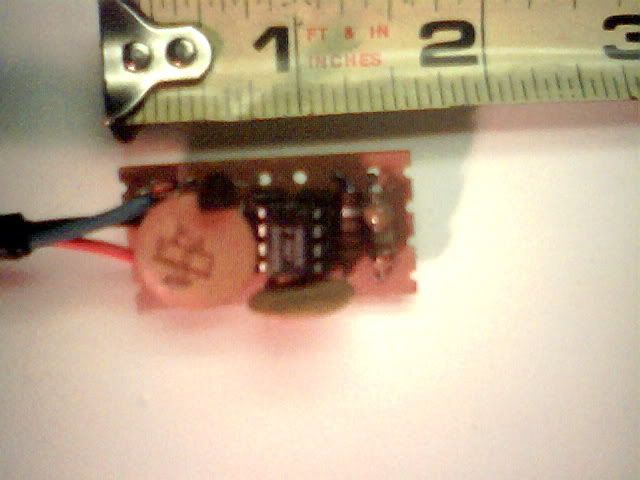yellowlust
Member
Have you ever had that sickening feeling of turning the key and nothing happening, not even the gnashing sound of the starter? Welcome to the wonderful world of VATS.
I've now had my 86 (now departed) and 95 both strand me in such a manner.
There are quite a few posts about VATS, but I'm going to try to provide a picture guide for those of us (like me) who are not entirely electrically-savvy. Information was gathered from this forum and from an email from jmccloud.
Troubleshooting included pulling the clutch safety switch out and testing. Also trying to clean the ignition switch and key pellets. And then finally, sticking the key in and seeing if i could see any resistance in the wiring harness. More details on this below.
Step one: Get your multimeter (mine was something like $5 at Harbor Freight) and figure out your key pellet resistance. Mine happened to be 526 ohms. I didn't know how to read my multimeter very well so the first time I went to Radio Shack I got 10k ohm resistors.
Step two: Use this chart to figure out which resistor set you are in. I am in #2.
#
Nominal
Low
High
#1
402
386
438
#2
523
502
564
#3
681
654
728
#4
887
852
942
#5
1130
1085
1195
#6
1470
1411
1549
#7
1870
1795
1965
#8
2370
2275
2485
#9
3010
2890
3150
#10
3740
3590
3910
#11
4750
4560
4960
#12
6040
5798
6302
#13
7500
7200
7820
#14
9530
9149
9931
#15
11800
11328
12292
Step 3: Go to Radio Shack and get some resistors. At $.99 for 5 you can afford to get a bunch if you need to.

I knew from the chart above that I needed to get to something in between 502-564 ohms. So using the info in Step 4 I got some 220 and 330 and then some 10 ohm, just in case. I lucked out, as not all combinations will be that easy.
Step 4. (from jmccloud)
Combine resistors until your multimeter gives the same reading for the resistors as it does for the pellet in the key. Resistors typically have a 10% tolerance on value so you may have to try several different ones of the same rated value to get what you want.
Resistors connected end to end 'add' value. So two 1000 ohm resistors connected end to end would measure 2000 ohms. That's a 'series' connection.
Resistors connected side to side in a 'parallel' connection combine according to the formula A*B/(A+B). So two 1000 ohm resistors connected in parallel would be 1000*1000/(1000+1000) or 1000000/2000=500ohms. Or a 1000 connected in parallel to a 500 would be 1000*500/(1000+500) or 500000/1500=333ohms.
So use several resistors in series or parallel or a combination and you can get the "Nominal" value very accurately.
Step 5: Find the VATS wires. This info is for a 95. Yours may be different.

The white wires with the orange cover are the wires coming from the ignition switch. For trouble shooting I hooked up the multimeter and put the key in the ignition. I got no change on the multimeter.

These are the wires that connect from the wires coming from the ignition switch and go to the VATS box or whatever you want to call that evil thing. That big clump of relays are left over from an aftermarket security system a previous owner had installed. One these days I'm going to rip that @#%% thing out.
Step 6: Testing. I prefer testing as i go along. I'm funny that way. Maybe it's from hanging upside down under the dash for too long.
I took my two resistors (220 and 330) which I had soldered (poorly) together and hooked up alligator clips to the wires going to the VATS box. (At this point we don't care about the wires coming from the ignition switch.)


And the car started for the first time in a week. Phew.
Step 7. Cleaning up the installation. Now I was faced with figuring out how to install the resistors permanently. The connector going to the VATS box was a male and I didn't have a good way to attach the resistors. So I removed the connector cover and soldered the resistors right to the male ends. Hopefully when I restore this car in 20 years I'm able to reverse this.

I covered it with heat shrink tubing and tucked everything carefully up under the dash.
And then I went for a drive.
Total cost:
Tow home: $50
Resistors: $4
Chiropractor visit from cramming under the dash: $7000
Joy of defeating another GM engineer: Priceless
I've now had my 86 (now departed) and 95 both strand me in such a manner.
There are quite a few posts about VATS, but I'm going to try to provide a picture guide for those of us (like me) who are not entirely electrically-savvy. Information was gathered from this forum and from an email from jmccloud.
Troubleshooting included pulling the clutch safety switch out and testing. Also trying to clean the ignition switch and key pellets. And then finally, sticking the key in and seeing if i could see any resistance in the wiring harness. More details on this below.
Step one: Get your multimeter (mine was something like $5 at Harbor Freight) and figure out your key pellet resistance. Mine happened to be 526 ohms. I didn't know how to read my multimeter very well so the first time I went to Radio Shack I got 10k ohm resistors.
Step two: Use this chart to figure out which resistor set you are in. I am in #2.
#
Nominal
Low
High
#1
402
386
438
#2
523
502
564
#3
681
654
728
#4
887
852
942
#5
1130
1085
1195
#6
1470
1411
1549
#7
1870
1795
1965
#8
2370
2275
2485
#9
3010
2890
3150
#10
3740
3590
3910
#11
4750
4560
4960
#12
6040
5798
6302
#13
7500
7200
7820
#14
9530
9149
9931
#15
11800
11328
12292
Step 3: Go to Radio Shack and get some resistors. At $.99 for 5 you can afford to get a bunch if you need to.
I knew from the chart above that I needed to get to something in between 502-564 ohms. So using the info in Step 4 I got some 220 and 330 and then some 10 ohm, just in case. I lucked out, as not all combinations will be that easy.
Step 4. (from jmccloud)
Combine resistors until your multimeter gives the same reading for the resistors as it does for the pellet in the key. Resistors typically have a 10% tolerance on value so you may have to try several different ones of the same rated value to get what you want.
Resistors connected end to end 'add' value. So two 1000 ohm resistors connected end to end would measure 2000 ohms. That's a 'series' connection.
Resistors connected side to side in a 'parallel' connection combine according to the formula A*B/(A+B). So two 1000 ohm resistors connected in parallel would be 1000*1000/(1000+1000) or 1000000/2000=500ohms. Or a 1000 connected in parallel to a 500 would be 1000*500/(1000+500) or 500000/1500=333ohms.
So use several resistors in series or parallel or a combination and you can get the "Nominal" value very accurately.
Step 5: Find the VATS wires. This info is for a 95. Yours may be different.
The white wires with the orange cover are the wires coming from the ignition switch. For trouble shooting I hooked up the multimeter and put the key in the ignition. I got no change on the multimeter.
These are the wires that connect from the wires coming from the ignition switch and go to the VATS box or whatever you want to call that evil thing. That big clump of relays are left over from an aftermarket security system a previous owner had installed. One these days I'm going to rip that @#%% thing out.
Step 6: Testing. I prefer testing as i go along. I'm funny that way. Maybe it's from hanging upside down under the dash for too long.
I took my two resistors (220 and 330) which I had soldered (poorly) together and hooked up alligator clips to the wires going to the VATS box. (At this point we don't care about the wires coming from the ignition switch.)
And the car started for the first time in a week. Phew.
Step 7. Cleaning up the installation. Now I was faced with figuring out how to install the resistors permanently. The connector going to the VATS box was a male and I didn't have a good way to attach the resistors. So I removed the connector cover and soldered the resistors right to the male ends. Hopefully when I restore this car in 20 years I'm able to reverse this.
I covered it with heat shrink tubing and tucked everything carefully up under the dash.
And then I went for a drive.
Total cost:
Tow home: $50
Resistors: $4
Chiropractor visit from cramming under the dash: $7000
Joy of defeating another GM engineer: Priceless

 ad
ad 




